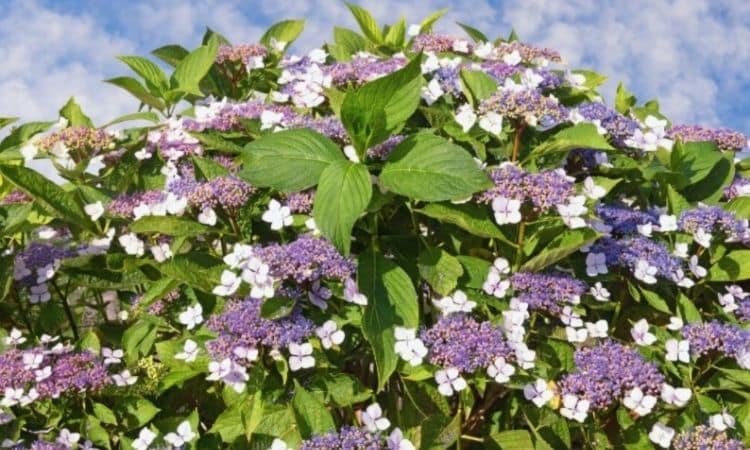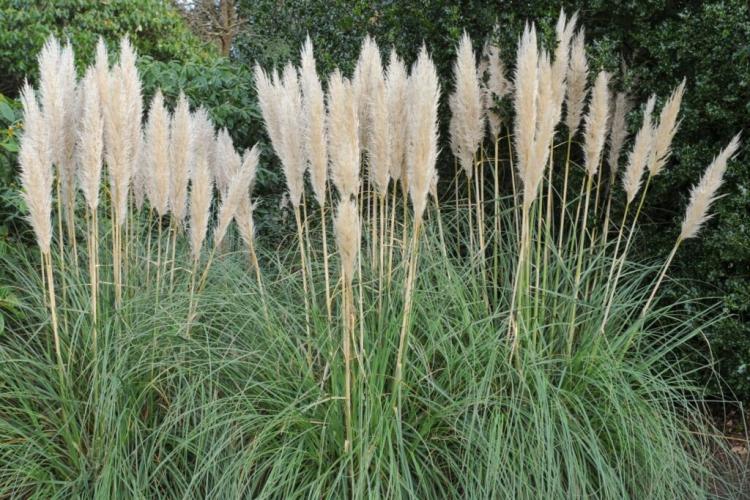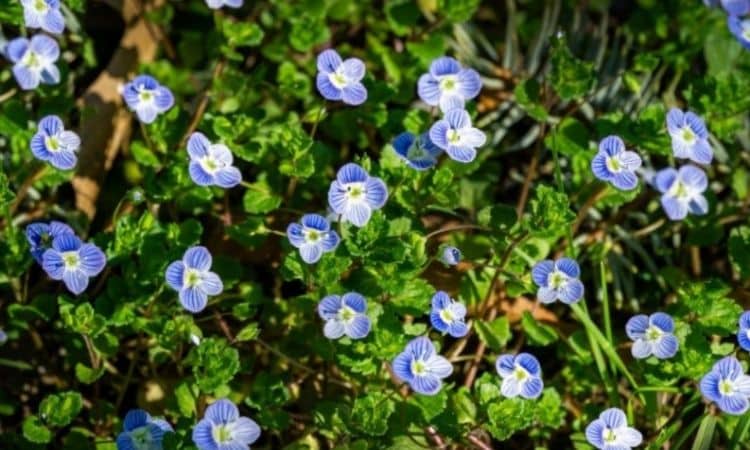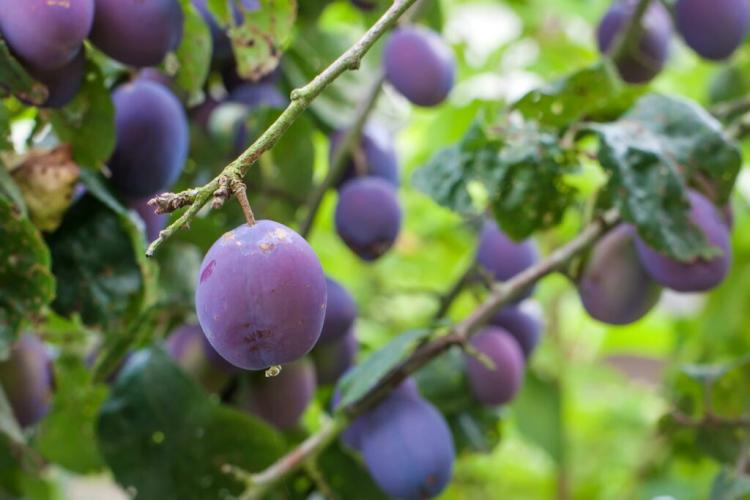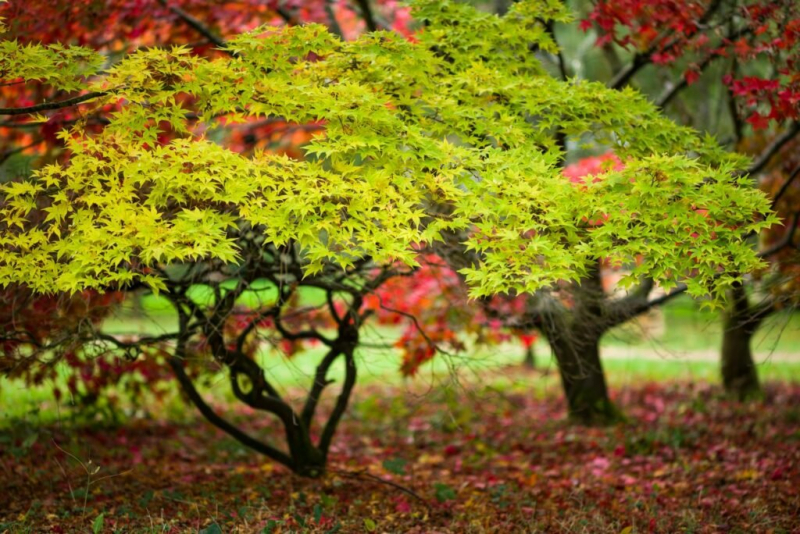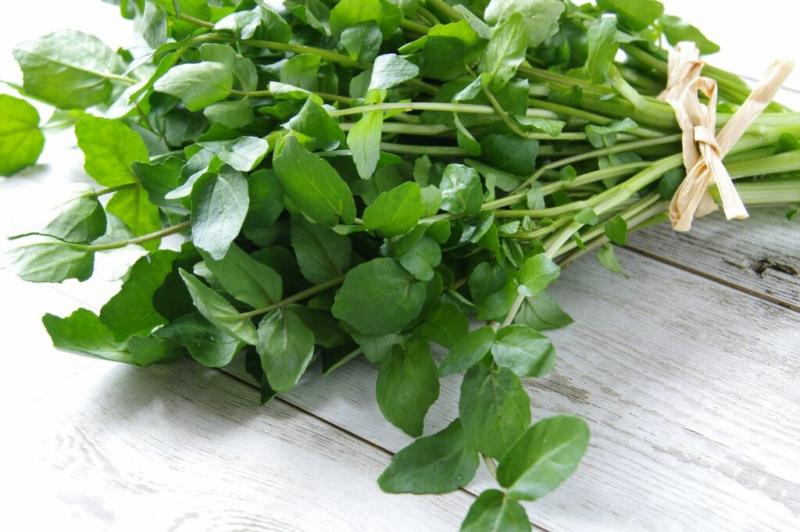Hydrangea Aspera(Macrophylla): Plants, Care And Cut
The Hydrangea Aspera is also known under the name rough hydrangea. We introduce you to the most beautiful Hydrangea Aspera varieties and explain what you need to consider when planting and caring for them.
The Hydrangea Aspera is characterized by the fine hairiness of the leaves, which also gives the plant its name. Another special feature is the two-colored flower panicles.
Hydrangea Aspera: flowering time, origin, and characteristics
Table of Contents
The Hydrangea Aspera ssp. sargentiana) is considered a wild species and originates from East Asia, where it thrives in light, moist deciduous forests. It grows as an upright, perennial semi-shrub and grows to a height of about 2 to 3.5 meters, and is just as wide.
From July onwards, flower panicles of about 5.9 to 7.8. in size appear above the opposite, egg-shaped, pointed leaves, which have a dull green color and are delicately hairy on both the upper and lower side. The pretty panicles can be seen until August. They are composed of fertile inner flowers and sterile outer flowers.
The light purple-colored inner flowers predominate. In the course of the flowering, the color changes more into a violet to blue tone. The outer blooms are composed of 4 to 5 petals and are light pink to white in color. Insects find neither pollen nor nectar in the outer flowers, but the inner flowers offer them plenty of food.
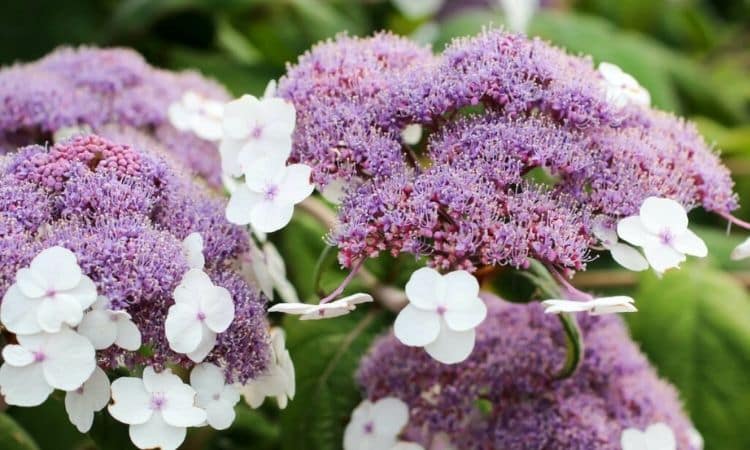
The question remains: Is the Hydrangea Aspera poisonous? Macrophylla, like other hydrangea species, is considered only slightly poisonous. The flowers and leaves, in particular, contain, for example, cyanide glycosides that have a toxic effect. However, the concentration is comparatively low, so that a large number of plant parts would have to be absorbed before poisoning occurs. Nevertheless, consumption is not recommended and especially children and pets should be protected accordingly.
The most beautiful Hydrangea Aspera varieties
Derived from the original Hydrangea Aspera ssp. sargentiana, the cultivar Hydrangea Aspera ‘Macrophylla’ exists. It forms particularly large flower panicles and leaves.
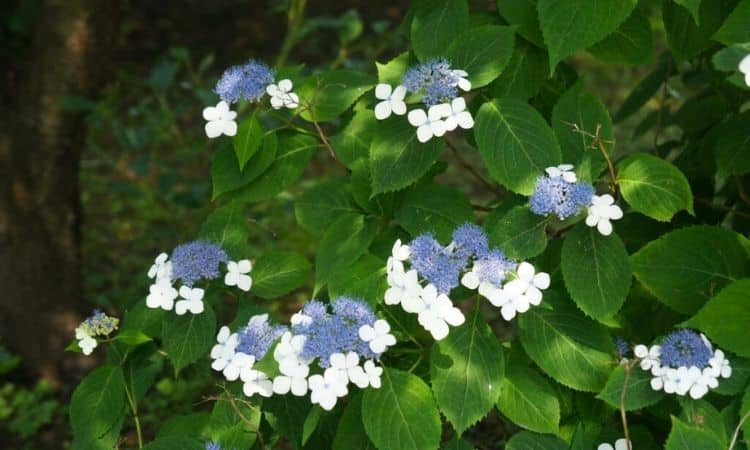
Hydrangea Aspera Plants: Location Requirements
Hydrangeas Aspera prefers half-shaded, sheltered locations in the garden. The soil should be acidic to neutral, but in no case calcareous. It should also be hummus, fresh to moist, and nutritious.
If your soil does not meet these requirements, you can create improved soil conditions by taking specific measures. Very sandy or very clayey soils should be mixed with high-quality and rather nutrient-rich potting soil and thus improved.
It may also be necessary to reduce the soil pH value by mulching with needle litter, bark mulch, or grape marc and enriching the soil with organic fertilizer. Also remember that under the right conditions, hydrangeas can grow fast and can become very large. Therefore, choose a place in your garden where your plant can develop undisturbed.
The right time for planting hydrangeas in spring. Dig a sufficiently large planting hole. It should have about twice the volume of the plant container. Put some loose soil in the hole and then place the planting ball inside so that the top edge of the ball is flush with the edge of the planting hole.
By loosening the planting ball with your hands or a spade, you will cause small injuries to the roots. These injuries stimulate root growth. Then fill the hole with soil. Press well and water generously.
A starter fertilizer with horn shavings or a special hydrangea fertilizer, as well as a mulch layer of leaves or bark mulch to prevent evaporation, give the hydrangea the best starting conditions for a good.
Care of the hydrangeas
Hydrangeas have an extremely high water requirement. Regular fertilization supports growth and flowering. The Hydrangea Aspera can be cut back as needed. Further care measures are usually not necessary.
Fertilizing and watering
Besides the above-mentioned initial fertilization, hydrangeas do not need to be fertilized. Regular replenishment of the nutrient depot is only recommended for hydrangeas planted in pots. However, the hydrangea is not very suitable as a potted plant anyway due to its high growth rate. If you are looking for a suitable hydrangea for your balcony, the best choice is a plate or garden hydrangea.
Without water, however, the hydrangea does not survive for long. Hydrangeas are among the thirstiest garden plants and need regular watering. In long dry periods in summer, hydrangeas should even be watered twice a day. Always use rainwater or low-lime tap water for watering, as hydrangeas are sensitive to lime.
Hydrangea Aspera Cut
Pruning should generally be done in spring. Shoots that have died off in winter should be removed with garden shears. If necessary, the Macrophylla can also be cut back strongly if its crown becomes too bulky. However, the plant can react to a strong pruning in the following year by not flowering.
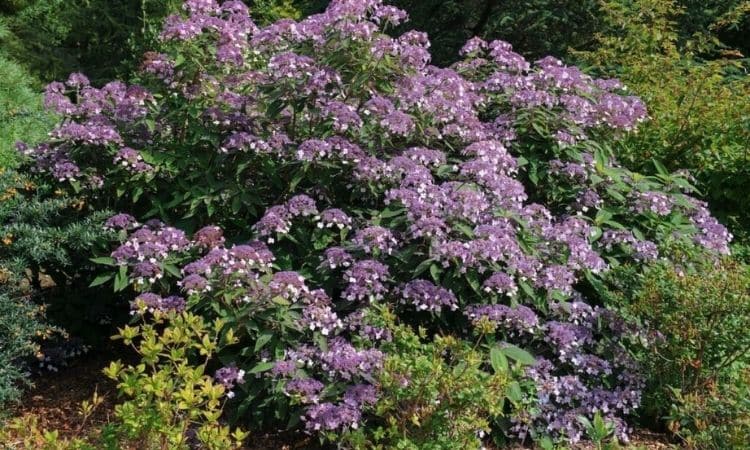
To prevent the Hydrangea Aspera from spreading too far, root runners can be cut off with a spade and disposed of in the compost or replanted in another place in the garden.
Hydrangea Hibernate
Hydrangeas are hardy with us. When buying, always choose robust plants from the specialized trade, which have been well hardened. To be on the safe side and avoid frost damage to the roots of the hydrangeas, you can cover the soil around the hydrangeas with leaves and fir branches. This measure is especially recommended for young or newly planted hydrangeas.
Propagation
Hydrangeas can be propagated using cuttings or cuttings. While the cuttings are leafy and are cut in spring, the unleafed cuttings are cut in winter. In the period between late autumn and spring, just grown shoots from the last season are cut off the hydrangeas. Afterward, several 10 – 15 cm long pieces of wood are cut off, each with a pair of eyes (budding plants) at the upper end. The thin shoot tip is not used.
Afterward, the cuttings can either be put directly into the flower bed or flower pots filled with substrate. Make sure that they are inserted in the right direction. For the flower pots, choose peat-free sowing soil. Add a little sand or perlite to the soil. This increases the air capacity of the soil and improves rooting.
Insert the wooden sticks so far into the soil that only the upper 2 – 3 cm protrude. Until the next spring, the plugs will take root. In the flower pot pulled young plants of the hydrangea should be replanted into the garden until the end of March.
As an alternative to propagating the cuttings, the roots of the hydrangea can be cut off and replanted elsewhere. With a little luck, new Hydrangeas Aspera will develop from them.
